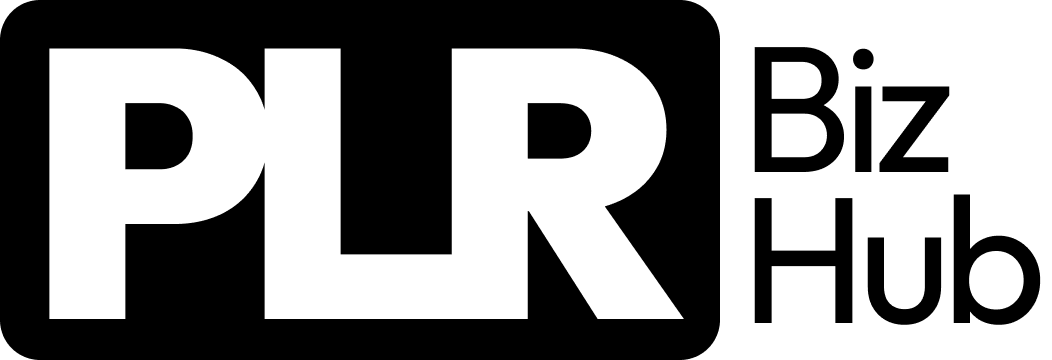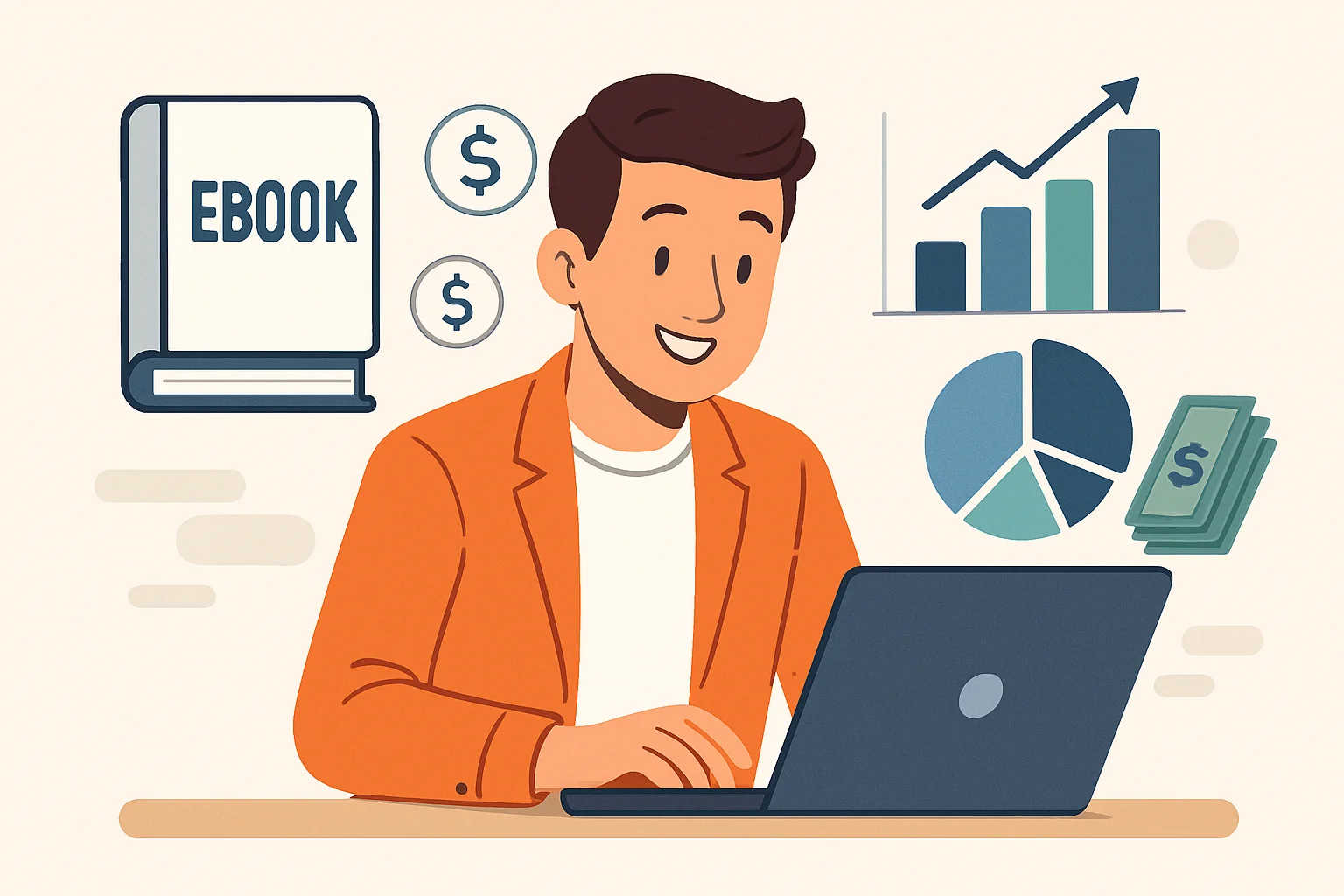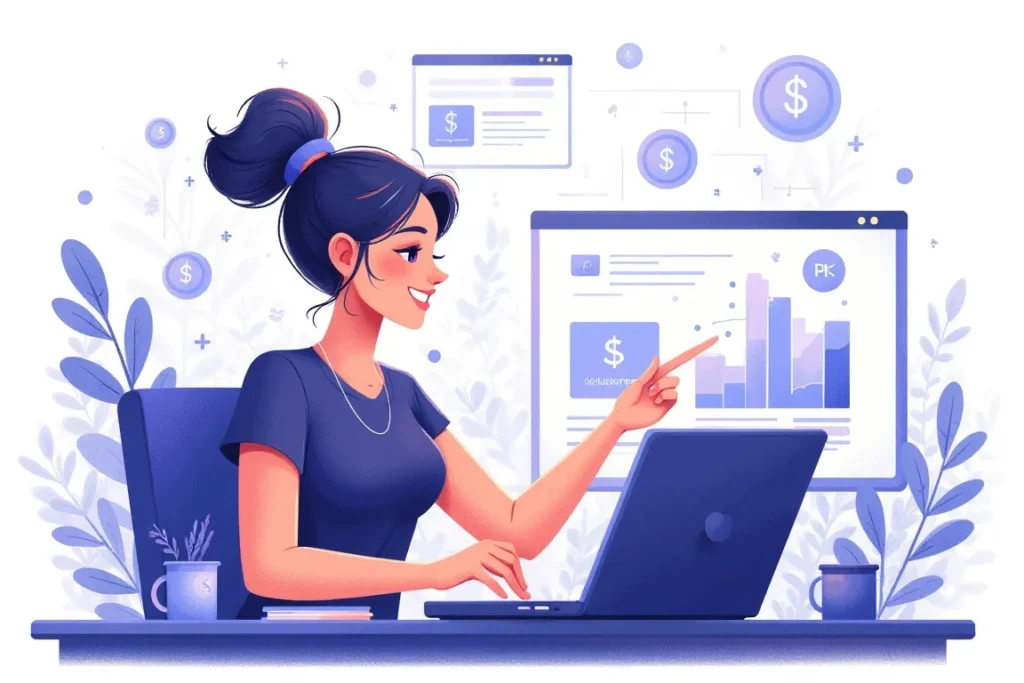The digital world moves fast, and opportunities wait for no one. There’s a way to meet the demand head-on, to launch quickly, and to start building your digital empire today. It involves using Private Label Rights content as your foundation. This is your comprehensive guide to doing just that. We’ll explore how you can make money from selling PLR ebooks and get your business off the ground this week.
Key Takeaways
Yes, you can absolutely make money from selling PLR ebooks. However, you can’t just buy a PLR ebook and resell it as-is and expect to see success. The profit is in the transformation. True success comes from treating PLR content as a starting point—a block of clay that you mold into something uniquely valuable for your audience.
Here’s what you need to know to get started:
- Customization is king. The most successful sellers heavily rebrand and modify their PLR content. This means changing titles, creating new covers, adding your own insights, and tailoring the information to your specific audience.
- Niche selection matters. Don’t try to sell to everyone. Focus on a specific, passionate audience with a clear problem you can solve. Profitable niches often include health and wellness, personal finance, relationships, and business development.
- Value is more than words. You can dramatically increase the perceived value of your PLR ebook by adding bonuses like checklists, worksheets, templates, or even a short video tutorial. This helps your product stand out in a crowded market.
- Marketing is your engine. A great product won’t sell itself. You need a solid marketing plan. This includes everything from building an email list and using social media to running targeted ads and optimizing your sales page.
If you want to skip the redesign process and get straight to selling, you might find that a pre-customized solution is the perfect fit. “Ready-to-Sell Digital Products” on plrbizhub.com are designed to help you launch your business with minimum customization.
What Exactly Are PLR Ebooks Anyway?
Let’s demystify this powerful acronym. PLR stands for Private Label Rights. When you purchase a PLR ebook, you’re not just buying the book itself; you’re buying a specific set of rights that typically allow you to edit, rebrand, and sell the content as your own. Think of it as buying a house. Once you own it, you can repaint the walls, renovate the kitchen, and change the landscaping to reflect your personal style.
PLR content is your digital real estate. It’s a foundation you can build upon. Instead of spending weeks or months staring at a blank page, researching, writing, and editing, you get a fully written manuscript. Your job is to be the creative director—to take that manuscript and transform it into a polished, premium product that bears your unique brand. This could mean rewriting sections to match your voice, adding personal anecdotes, or inserting new, up-to-date information.
Understanding PLR licenses
Not all rights are created equal, and it’s crucial to read the fine print of your PLR license. Every PLR provider has slightly different terms, but they generally fall into a few categories of what you can and can’t do.
Typically, a PLR license will allow you to:
- Claim authorship of the content.
- Edit and modify the content in any way you see fit.
- Put your name and brand on the final product.
- Sell the product to your customers.
- Break down the content into smaller pieces, like blog posts or social media updates.
- Bundle it with other products to create a high-value offer.
However, there are also common restrictions. For example, you usually cannot resell the PLR rights themselves or give the product away for free with its original PLR license. Always, always check the specific license that comes with your purchase. It’s your legal guide to what’s possible.
The difference between PLR, MRR, and RR
As you explore the world of resellable digital products, you’ll encounter a few other acronyms. Understanding the difference is key to buying the right type of content for your business goals.
- Private Label Rights (PLR): This is the most flexible option. It gives you the power to change the content and claim it as your own. This is the best choice for anyone who wants to create a unique, branded product line.
- Master Resell Rights (MRR): With MRR, you can sell the product to your customers, and you can also pass on the resell rights to them. This means your customers can also sell the product. However, you typically cannot edit the content or claim authorship. The product must be sold as-is.
- Resell Rights (RR): This is the most basic level of rights. You can sell the product to your customers for their personal use, but you cannot pass on any resell rights to them. Your customers are the end-users. Like MRR, you usually cannot edit the content.
For building a unique brand and a long-term, sustainable business, PLR is almost always the superior choice. It gives you the creative control needed to stand out and deliver genuine value to your audience.
Useful Articles:
The Goldmine Finding The Right Niche
Before you even think about buying your first PLR ebook, you need to decide who you’re going to sell it to. This is, without a doubt, one of the most critical steps in the entire process. Choosing the right niche is like choosing the right fishing spot; if you cast your line where there are no fish, you’re going home empty-handed.
A niche is simply a specialized segment of the market for a particular kind of product or service. Instead of “weight loss,” a niche would be “intermittent fasting for women over 40.” Instead of “making money online,” a niche would be “side hustles for college students.” See the difference? Specificity sells.
How to identify profitable niches
Profitable niches sit at the intersection of three things: passion, problems, and profitability. You’re looking for a group of people who are passionate about a topic, face a specific problem related to it, and are willing to spend money to solve that problem.
Here are some ways to uncover these goldmines:
- Explore online marketplaces: Go to platforms like Amazon Kindle, Etsy, and Gumroad. What topics are consistently popular? Look at the best-seller lists. What categories have tons of products and reviews? This is a direct indicator of market demand.
- Follow the questions: Visit forums like Reddit and Quora. What questions are people asking over and over again? What are their biggest frustrations? Each repeated question is a potential ebook topic. For example, if you see dozens of threads about “how to budget on a low income,” that’s a clear signal of a pain point.
- Use keyword research tools: Tools like Google Keyword Planner or Ubersuggest can show you what people are searching for online. Look for keywords that have a decent search volume but aren’t hyper-competitive. This can help you find underserved corners of the market.
- Analyze your own skills: What are you knowledgeable about? What problems have you solved in your own life? Your personal experience can be a powerful guide to a niche you’ll not only understand but also be passionate about.
Evergreen vs. trending topics
When choosing your niche, you’ll have to decide between focusing on an evergreen topic or a trending one. Both can be profitable, but they require different strategies.
- Evergreen Topics: These are subjects that have perennial interest. They will be just as relevant five years from now as they are today. Think of topics like personal finance, dog training, healthy eating, relationships, and self-improvement. Evergreen niches are fantastic for building a stable, long-term business because the demand never disappears.
- Trending Topics: These are subjects that are hot right now. Think of things like a new social media platform, a specific diet that’s gone viral, or a new piece of technology. Trending topics can lead to a quick surge in sales if you can get your product to market fast. The downside is that interest can fade just as quickly as it appeared, requiring you to constantly pivot to the next new thing.
For beginners, evergreen niches are often the safer and more sustainable bet. They give you time to learn the ropes of marketing and build a brand without the pressure of a ticking clock.
Transforming Your PLR Ebook Into A Masterpiece
Here’s where the magic really happens. Buying a PLR ebook is just the first step. Turning it into a product that people are excited to buy requires a thoughtful transformation process. This is how you differentiate yourself from everyone else who bought the same PLR package. Your goal is to add so much value and personality that the original PLR content becomes completely unrecognizable.
The art of rebranding
Rebranding is more than just swapping out a logo. It’s about infusing the product with your unique brand identity. This is how you build trust and recognition with your audience.
- Create a new title and subtitle: The original title is likely generic. Brainstorm something that is catchy, benefit-driven, and speaks directly to your niche’s desires. A great title can make a huge difference in click-through rates and sales.
- Rewrite the introduction and conclusion: These are the first and last things your readers will see. Rewrite them completely in your own voice. Use the introduction to hook the reader and promise a solution, and use the conclusion to summarize the key takeaways and provide a clear call to action.
- Format for readability: Use clear headings, subheadings, bullet points, and bold text to break up the content and make it easy to scan. A well-formatted ebook feels more professional and is much more enjoyable to read.
Designing a killer new cover
People absolutely judge a book by its cover. A cheap, amateurish cover will scream “low quality,” even if the content inside is brilliant. Investing in a great cover is non-negotiable.
You have a few options here:
- DIY with user-friendly tools: Platforms like Canva offer thousands of ebook cover templates that you can easily customize. You can change the colors, fonts, and images to match your brand. With a little bit of design sense, you can create something surprisingly professional.
- Hire a freelancer: For a relatively small investment, you can hire a designer on a platform like Fiverr or Upwork to create a completely custom cover for you. This is often the best option if you want a truly unique and polished look. Provide them with your new title, your brand colors, and some examples of covers you like.
Your cover is your number one sales tool. Don’t cut corners on it.
Rewriting and adding unique content
This is the step that separates the amateurs from the pros. To truly make the ebook your own and provide maximum value, you need to get your hands dirty with the content itself.
- Inject your personality: Read through the entire ebook and rewrite sentences and paragraphs to match your tone and style. Are you witty and informal? Or are you more academic and authoritative? Let your voice shine through.
- Add personal stories and examples: Do you have a personal experience that relates to the ebook’s topic? Add it in! Stories make the content more relatable and memorable. They also build a stronger connection between you and your reader.
- Update and expand: The PLR content might be a few years old. Do some research and add new statistics, updated strategies, or additional chapters. If the ebook is about social media marketing, for example, you’ll definitely want to add sections on the latest platforms and features.
- Check for accuracy: Never assume the PLR content is 100% accurate. Fact-check any statistics, claims, or instructions. Your reputation is on the line, so ensure the information you’re selling is correct and helpful.
Adding bonuses and extra value
How do you make your ebook an irresistible offer? You bundle it with high-value bonuses. This strategy, known as value stacking, can dramatically increase your conversion rates because customers feel like they are getting an amazing deal.
Your bonuses should be highly relevant to the main ebook. Here are some ideas:
- Checklists: A one-page summary of the key action steps from the ebook.
- Worksheets or Workbooks: Interactive pages that help the reader apply the information to their own life.
- Templates: Pre-made templates for things like email scripts, social media posts, or budgets.
- Resource Guides: A curated list of the best tools, books, or websites related to the topic.
- A Short Video Tutorial: A quick video where you explain a key concept from the book in more detail.
Creating a few simple bonuses can easily double or triple the perceived value of your product, allowing you to charge a higher price and stand out from the competition.
Useful Articles:
Setting Up Your Digital Storefront
Once you’ve transformed your PLR ebook into a unique and valuable product, you need a place to sell it. Your digital storefront is where customers will come to learn about your product and make a purchase. The platform you choose will depend on your technical skills, your budget, and your long-term business goals.
Choosing the right platform to sell
There’s no single “best” platform for everyone. The right choice for you will balance ease of use with features and fees. You essentially have two main options: sell on an existing marketplace or sell on your own website.
- Marketplaces: These platforms come with a built-in audience of buyers who are actively searching for products. This can be a huge advantage when you’re just starting out. The trade-off is that you’ll face more direct competition, and the platform will take a cut of your sales.
- Your Own Website: Selling on your own site gives you 100% control over your branding, customer experience, and pricing. You also get to keep a larger percentage of your revenue. The challenge is that you are responsible for driving all of your own traffic, which can be a slow process at the beginning.
Many successful sellers use a hybrid approach: they start on a marketplace to gain initial traction and validate their product, then eventually build their own website as their brand grows.
Platforms like Etsy, Gumroad, and Stan Store
These platforms are incredibly popular with digital product sellers, and for good reason. They make it exceptionally easy to get started.
- Etsy: Traditionally known for handmade goods, Etsy has become a massive marketplace for digital products, especially in creative and organizational niches (like planners, templates, and wall art). It has a huge, active user base, but the competition is fierce, and the search algorithm can be tricky to master.
- Gumroad: Gumroad is a minimalist and creator-friendly platform designed specifically for selling digital goods. It’s incredibly simple to set up a product page and start selling in minutes. It’s a favorite among artists, writers, and software developers. Gumroad handles file delivery and payment processing, making your life easy.
- Stan Store: A newer player on the scene, Stan Store is a “link-in-bio” tool that’s optimized for creators on social media platforms like TikTok and Instagram. It allows you to build a simple storefront directly on your social profile, making it seamless for your followers to purchase your products.
Selling on your own website (Shopify, WordPress)
For those who want ultimate control and are thinking about long-term brand building, selling on a self-hosted website is the way to go.
- Shopify: Shopify is an all-in-one e-commerce platform that gives you everything you need to build a professional online store. It’s powerful, scalable, and has excellent tools for marketing and analytics. While it has a monthly subscription fee, it’s a robust solution for serious entrepreneurs who plan to sell multiple products.
- WordPress with a Plugin: If you already have a WordPress blog, you can easily add e-commerce functionality using a plugin like Easy Digital Downloads or WooCommerce. This is a great option because it allows you to integrate your store seamlessly with your existing content. It can be more technical to set up than Shopify, but it offers unparalleled flexibility and is often more cost-effective in the long run.
Pricing Your Ebook For Profit
Pricing is one of the areas where new digital product sellers struggle the most. If you price too low, you leave money on the table and devalue your product. If you price too high, you might scare away potential customers. Finding that sweet spot requires a bit of research and a strategic approach.
Factors to consider when setting a price
Don’t just pick a number out of thin air. Your pricing decision should be informed by several key factors.
- Market research: What are similar ebooks in your niche selling for? Go to Etsy, Gumroad, and Amazon and look at your competitors. You don’t have to match their prices, but you need to know the general price range that customers are accustomed to.
- The value you provide: How much transformation does your ebook offer? A simple 20-page guide on “10 Vegan Breakfast Recipes” will command a lower price than a comprehensive 100-page ebook on “The Complete Guide to Starting a Vegan Lifestyle,” especially if the latter includes meal plans, shopping lists, and bonus recipes. The more value you pack in, the more you can charge.
- Your target audience: Who are you selling to? Are they students on a tight budget or established professionals willing to invest in their development? Your price needs to align with your audience’s perceived value and ability to pay.
Value-based pricing vs. cost-plus
Forget about what the PLR cost you. The price you paid for the license is irrelevant to the final price of your transformed product. Instead, you should focus on value-based pricing.
This means you set your price based on the perceived value to the customer. Ask yourself: what outcome does my ebook deliver? If your ebook helps someone save 10 hours a week, what is that time worth to them? If it helps them start a side hustle that makes an extra $200 a month, what is that skill worth? When you anchor your price to the result, you can confidently charge much more than a few dollars.
A common pricing range for well-customized ebooks is anywhere from $7 to $47, depending heavily on the niche, the depth of the content, and the value of any included bonuses. Don’t be afraid to test different price points to see what works best for your audience.
Useful Articles:
Marketing Your Ebook Like A Pro
You’ve created an amazing product. Now you need to get it in front of the right people. Marketing isn’t something you do after your product is ready; it’s something you should be thinking about from the very beginning. A great product with no marketing will result in zero sales. It’s the engine that drives your entire business.
Building an email list
Your email list is your single most valuable marketing asset. Unlike social media followers, you own your email list. No algorithm change can take it away from you. It’s a direct line of communication to your most engaged fans and potential customers.
Start building your list from day one by offering a free lead magnet. This is a small, high-value piece of content that people get in exchange for their email address. It should be a quick win that’s closely related to your paid ebook. For example, if your ebook is about keto diets, your lead magnet could be a “7-Day Keto Meal Plan.”
Leveraging social media
Choose one or two social media platforms where your target audience hangs out and go deep on them. Don’t try to be everywhere at once.
- Pinterest: A visual search engine that’s perfect for driving traffic to digital products, especially in niches like home décor, recipes, crafts, and personal development. Create beautiful pins that link to your sales page or your lead magnet.
- Instagram: Use a mix of Reels, Stories, and carousel posts to provide value, share tips, and build a community around your topic. Your link-in-bio is prime real estate for your ebook.
- TikTok: The king of short-form video. Create engaging, educational, or entertaining videos related to your niche. A single viral video can lead to a massive influx of traffic and sales.
- Facebook Groups: Find and participate in groups where your ideal customers gather. Offer genuine help and advice. Once you’ve established yourself as a helpful member, you can often subtly mention your product where it’s relevant.
Content marketing and SEO
Content marketing is the strategy of creating valuable and relevant content (like blog posts, videos, or podcasts) to attract and retain your audience. Search Engine Optimization (SEO) is the process of optimizing that content to show up in search engine results.
By writing blog posts on topics related to your ebook, you can attract people who are actively searching for solutions on Google. For example, if you sell an ebook on container gardening, you could write blog posts like “The 10 Best Vegetables to Grow in Pots” or “How to Fix Yellow Leaves on Your Tomato Plants.” At the end of each post, you can include a call to action to buy your more comprehensive ebook. This is a powerful long-term strategy for generating consistent, organic traffic.
Paid advertising strategies
Once you have a product that is proven to sell, you can pour gasoline on the fire with paid ads.
- Facebook/Instagram Ads: These platforms have incredibly powerful targeting options, allowing you to show your ads to a very specific demographic based on their interests, behaviors, and location.
- Pinterest Ads: Promoted pins can be a highly effective and often cheaper alternative to Facebook Ads, especially for visual products.
- Google Ads: This allows you to target people based on the exact keywords they are searching for, making it a high-intent form of advertising.
Start with a small budget, test different ad creatives and audiences, and scale what works. Paid ads can provide a predictable and scalable way to grow your sales once you’ve dialed in your offer.
Ultimately, the journey to make money from selling PLR ebooks is one of creativity, strategy, and consistent effort. By treating PLR content as a launchpad rather than a final product, you can build a thriving digital business that provides both income and impact.




